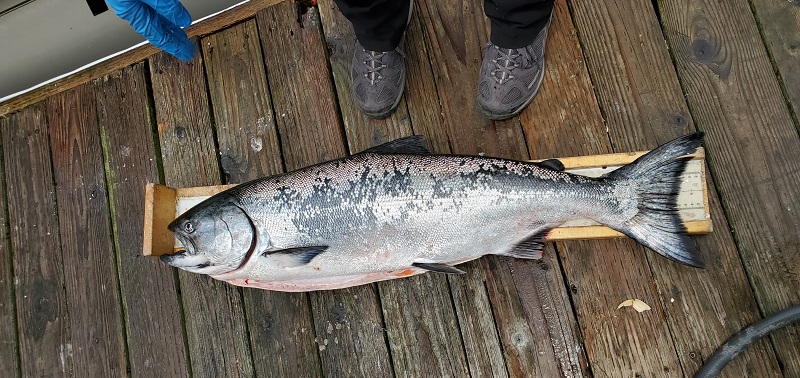Why should we care about PFAS chemicals?
Polyfluoroalkyl substances (PFAS) are a group of chemicals used to make fluoropolymer coatings and products that resist heat, oil, stains, grease, and water. Fluoropolymer coatings can be in a variety of products such as non-stick pans and water-resistant clothing and are known as “forever chemicals.” They don’t break down naturally and, when accumulated in the body, cause a host of health issues.
These “forever chemicals” are linked to increased incidence of cancer, liver and kidney disease, reproductive issues, immunodeficiencies, and hormonal disruptions. Though experts estimate that more than 200 million Americans are exposed to PFAS through drinking water, there are no binding, enforceable regulatory standards in place to protect the public and our nation’s waters from this serious health hazard.

In a first-of-its-kind water survey, SYRCL, along with other members of the Waterkeeper Alliance tested 114 total waterways in 34 states for PFAS chemicals.
This extensive study found that 83% of the waters tested across the country were found to be contaminated by these dangerous chemicals.
When testing the Yuba River for these chemicals, SYRCL’s Watershed Science Staff found that PFAS levels were below detectable levels. This is good news, but more work is needed.
SYRCL tested for PFAS at two sites: Lower Long Bar and Bridgeport. As we continue to monitor for PFAS chemicals, future testing sites will include Deer Creek and Scotts Flat Reservoir. We understand that this is an issue we need to be ahead of.
Despite the serious health risks, there are currently no universal, science-based limits on the various PFAS chemicals in the United States. For many PFAS chemicals, the EPA has not even set a health advisory limit that would give the public a baseline to determine what amount of PFAS is unhealthy in drinking water. In most cases, the EPA is not doing adequate monitoring for these chemicals, which is why these findings are so unique and important.
This data plainly demonstrates that Congress and EPA must act with urgency to control persistent PFAS contamination across the country. The current lack of oversight puts the health and safety of communities and ecosystems across the nation at risk and results in costly cleanup and treatment activities to remove PFAS contamination after it has occurred.
Learn more at waterkeeper.org/PFAS
Did you enjoy this post?
Get new SYRCL articles delivered to your inbox by subscribing to our ENews.




